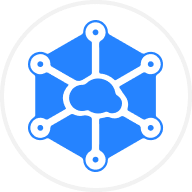In the ever-evolving realm of decentralized finance (DeFi), the surge of 2020 brought global access to decentralized banking. Acala recognized the need to adapt and embarked on a journey to become the cross-chain financial cornerstone of Polkadot. Offering a diverse array of financial instruments, Acala has swiftly emerged as a key DeFi player on Polkadot, with its growing community of 178,000 account holders poised to expand further as it continues to redefine DeFi's landscape.
What is Acala
Acala is a comprehensive DeFi ecosystem within the Polkadot network, fortified by the security of the underlying blockchain. This platform encompasses an array of cross-chain financial applications, earning it the reputation as the DeFi hub within the Polkadot ecosystem. At its core, Acala introduces a decentralized exchange (DEX) powered by an automated market model (AMM), enabling users to partake in trading activities while also offering the opportunity to stake DOT tokens through their Homa platform. In addition to the DEX, Acala further introduces the Honzon stablecoin protocol, enhancing the platform's versatility and expanding its offerings for users seeking robust and reliable DeFi solutions.
The Acala project team
Founded in October 2019 by Ruitao Su, Bette Chen, Bryan Chen, and Antonia Chen, Acala shares its roots with Laminar, a trailblazing Ethereum-based platform that powers margin and synthetic asset trading. The turning point came when they met Fuyao Jiang, creator of PolkaWallet, during a Substrate Hackathon in China. This encounter marked the inception of the Acala network.
How does Acala work
Acala boasts a diverse range of services within its ecosystem. Functioning as a decentralized financial hub for Polkadot with Ethereum Virtual Machine (EVM) compatibility, Acala seamlessly integrates both DOT-based and Ethereum-based assets and decentralized applications (dApps). Central to Acala is its AMM-based DEX, Acala Swaps, offering a comprehensive suite of DeFi services.
Beyond the DEX, Acala features two critical protocols enhancing Polkadot's stability and liquidity: Honzon and Homa. Honzon drives the stablecoin protocol, anchored by the US dollar-pegged stablecoin aUSD. This stablecoin is backed by a collateralized debt positions (CDP) system, utilizing assets like Polkadot (DOT), Bitcoin (BTC), or Ethereum (ETH) for security.
Homa, on the other hand, is Acala's staking platform. When staking participants stake DOT, they are awarded the equivalent amount of LDOT which remains liquid and tradable across all platforms. LDOT can be swapped back into DOT at anytime by its holders.
Acala’s native token: ACA
ACA is Acala Network’s native cryptocurrency, primarily serving as the network’s governance token. Launched in January 2022, the token has a max and total supply of 1 billion units.
ACA token use cases
ACA has several use cases, with the main one being governance. This means that by owning it, users gain the right to vote on various proposals involving the project. Apart from that, ACA is also used in staking, as a medium of exchange, and as an incentive for nodes.
Distribution of ACA
ACA is distributed as follows:
- 11.66 percent: Project’s backers
- 18.33 percent: Early investors
- 20.25 percent: Founding team
- 34 percent: Liquidity program and auction reserve
- 5 percent: Ecosystem development
- 10.76 percent: Foundation’s reserve


































